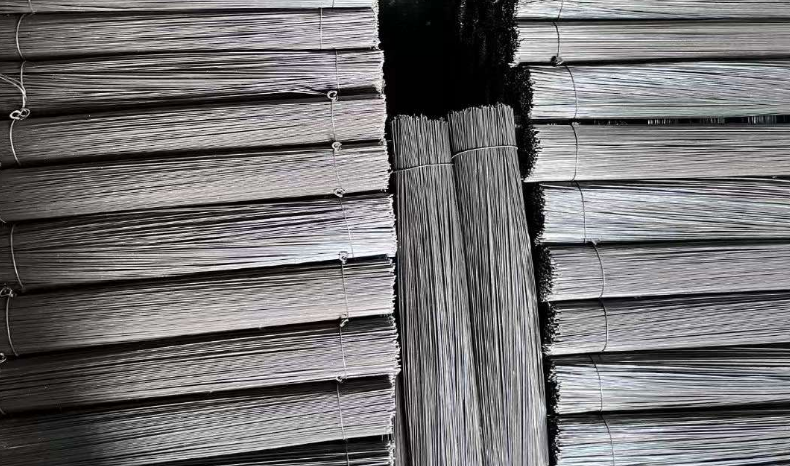Stainless steel, a corrosion-resistant alloy of iron with a minimum of 10.5% chromium, has become a ubiquitous material in various industries due to its unique properties. As a seasoned expert in the field of metal materials from Sino Stainless Steel, having spent years working with stainless steel and other alloys, I will delve into the tipi differenti ta 'azzar li ma jissaddadx u l-gradi tagħhom, providing a comprehensive overview of their characteristics, applications, and advantages.

Different Types of Stainless Steel and Their Grades:
Firstly, let’s discuss the two primary categories of stainless steel: awstenitiku u, martensitic. Austenitic stainless steel, the most common type, is non-magnetic and possesses excellent corrosion resistance. It contains high levels of kromju u, nikil, which give it its characteristic corrosion resistance and ductility. Austenitic stainless steel grades such as 304 and 316 are widely used in construction, food processing, and medical equipment due to their ease of welding, formability, and overall corrosion resistance.
On the other hand, martensitic stainless steel is magnetic and exhibits higher strength and hardness than austenitic grades. It contains less nickel and more carbon, which allows it to be heat-treated to achieve desired mechanical properties. Martensitic stainless steel grades, such as 410 u, 440, are often used in knives, cutting tools, and automotive components where high strength and wear resistance are required.
Now, let’s delve into the specific grades of stainless steel. Grad 304, magħruf ukoll bħala 18/8 azzar li ma jissaddadx, is the most commonly used grade. It contains 18% chromium and 8% nickel, providing good corrosion resistance and ductility. Grade 304 is suitable for a wide range of applications, including kitchenware, chemical processing equipment, and building materials.
Azzar li ma jissaddadx Grad 316 is a variation of 304 with the addition of molybdenum, which enhances its corrosion resistance, particularly against chloride ions. This grade is often used in marine environments, chemical processing, and other applications where exposure to corrosive substances is likely.
Grade 410 is a martensitic stainless steel that offers good corrosion resistance and high strength. It is commonly used in applications that require both corrosion resistance and mechanical strength, such as fasteners, valves, and surgical instruments.
Grad 430 huwa a azzar li ma jissaddadx ferritiku that contains high levels of chromium but lacks nickel. It is magnetic and exhibits good corrosion resistance, making it suitable for decorative applications such as automotive trim and appliances.
Grade 440, particularly grade 440C, is a high-carbon martensitic stainless steel known for its excellent hardness and wear resistance. It is often used in knife blades, surgical instruments, and other applications where sharpness and durability are crucial.
In addition to these common grades, there are numerous other specialized stainless steel grades available, each designed to meet specific requirements. For instance, duplex stainless steel grades, such as 2205, combine the corrosion resistance of austenitic stainless steel with the strength of martensitic grades, making them suitable for demanding applications in the oil and gas industry.
The selection of stainless steel grade depends on the specific requirements of the application. Factors such as corrosion resistance, mechanical properties, formability, weldability, and cost all play a role in determining the most suitable grade. As a metal materials expert, I often advise clients to carefully consider these factors when making material selection decisions.
Furthermore, it’s worth noting that the properties and performance of stainless steel can be further enhanced through various surface treatments, such as polishing, passivation, and coating. These treatments can improve corrosion resistance, enhance aesthetics, and extend the lifespan of stainless steel components.
konklużjoni
In conclusion, stainless steel is a versatile material with a wide range of grades and applications. From common grades like 304 and 316 to specialized grades designed for specific uses, the choice of stainless steel grade is crucial in ensuring the success of any project. As the field of metal materials continues to evolve, it’s essential for engineers and designers to stay informed about the latest advances in stainless steel technology to make the most informed material selection decisions.
Grazzi talli qrajt l-artiklu tagħna u nittamaw li jista 'jgħinek biex tifhem aħjar il- tipi differenti ta 'azzar li ma jissaddadx u l-gradi tagħhom. If you are looking for stainless steel supplier and manufacturer online now, we would advise you to visit Sino Stainless Steel.
Bħala fornitur ewlieni ta 'prodotti tal-istainless steel minn Shanghai Ċina, Sino Stainless Steel joffri lill-klijenti kwalità għolja folji dekorattivi tal-istainless steel, tubi tal-istainless steel, pajpijiet ta' l-istainless steel, strixxi tal-istainless steel, koljaturi tal-istainless steel, pjanċi tal-istainless steel, u vireg tal-istainless steel bi prezz kompetittiv ħafna.
 :+86-18621535697
:+86-18621535697  :export81@huaxia-intl.com
:export81@huaxia-intl.com